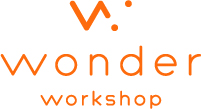Dash and Dot in the Curriculum
The most obvious curriculum use for a programmable robot is computing - after all, these little robots are masters at teaching coding. But there is so much more that the Dash robot and Dot robot can help with from maths, design technology, science, art and music.
Here are a few examples from the UK National Curriculum Programmes of Study documents:
Computing
- Use logical reasoning to explain how some simple algorithms work and to detect and correct errors in algorithms and programs - Using the Wonder or Blockly apps
- Creating and debugging simple programs - Using the Wonder or Blockly apps
- Logical reasoning - Using any of the apps
- Sequencing - Using the Wonder, Blockly or Path apps
Use the Challenge Card Set to help you teach all the fundamentals of coding, including sequences, loops, events, conditionals, functions and variables. Each durable laminated card gives the child a different task to complete and the Learn to Code Curriculum Guide helps teachers to understand the solutions to each task.


